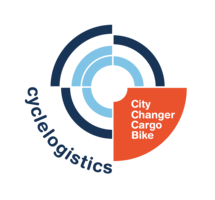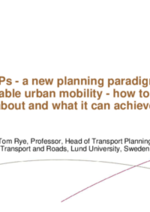
Strasbourg (France)
Strasbourg, population 470,000, is the capital of the Alsace region in northeastern France. It is well known as the seat of several European institutions, including the Council of Europe (with the European Court of Human Rights), as well as the European Parliament. Respectable measures were taken for a sustainable transport system.
he modal split in Strasbourg, according to 2000 data from the Institut für Landes- und Stadtenwicklungsforschung des Landes, was 52 percent for cars, 31 percent for walking, 15 percent for public transport and 7 percent for cycling.
The city has a robust public transport system and has many other opportunities for sustainable urban travel. For example, it reintroduced trams in 1994, becoming a pioneer in Western Europe’s streetcar renaissance. Having opened the last of its six tram lines in the fall of 2010, Strasbourg has 55.8 kilometers of tram tracks, the longest network in France. Low-floor rolling stock ensures maximum accessibility and many provisions are made to promote intermodality with cycling, trains, cars and walking.
Strasbourg claims to be France’s most cyclable city, having opened its first cycle tracks in the 1970s. Today it has 500 km of cycling infrastructure, 50 bike parking facilities and 6,000 bike racks. Some 130,000 people ride on the city’s bike routes every day.
A general policy goal to halve the city’s greenhouse emissions by 2025 targets multiple sectors including transport. Along with its robust public transport and cycling networks, the local authority is setting an example by expanding its fleet of natural gas vehicles.
Several other innovative projects are currently being planned or developed in Strasbourg:
Car pooling: Such a system already exists and is being developed further by the association Auto’trement with the encouragement of the city administration. This service consists of sharing the costs and optimizing the time a vehicle is used by making it available to other people.
Pedestrian-friendly street code: Road rules in Strasbourg extend special protections to those on foot.
Pedestrian priority zones: These are areas that are open to all road users, but where the pedestrian has priority. They are part of a transport concept called “filtered permeability” whereby certain streets don’t allow cars to pass through the city center but do allow cyclists and pedestrians through. This means that active transport is also the most convenient transport when traveling downtown.
The Tram-Train: A new type of vehicle able to run on both train tracks and tram lines will make it possible to go from the Strasbourg center and rail station to the foothills of the Vosges west of the town.
The “Module Cristal”: A new generation electric car, invented by an Alsatian company, Lohr Industrie, will be offered for rental for city center trips.
There was no data available about the city’s efforts to encourage stakeholder involvement and partnerships in its sustainable mobility measures.









